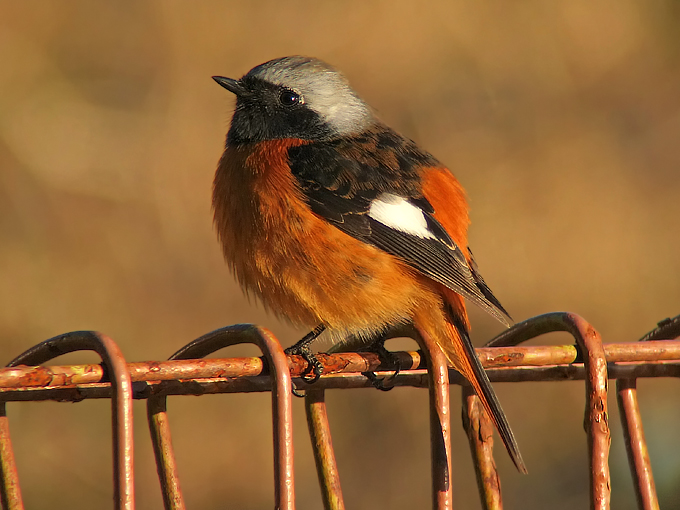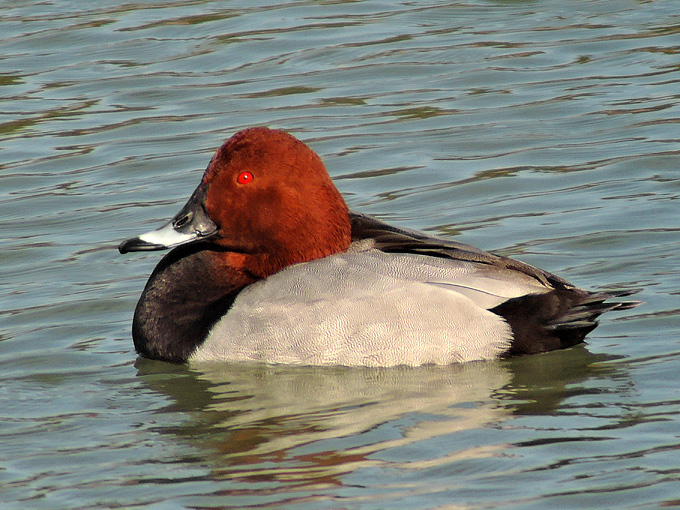
Birds are amazing. The shapes, sounds and behavior of flocks of geese and swans, and the plumage details I could see in garden birds first captivated me as a young child. And this fascination has continued to grow deeper and wider with the years. What we can learn about our world through watching the diversity and intelligence of birds appears to be limitless.
As birdwatchers, environmental educators, and ornithologists we need good optics. Over the past few decades I have graduated through probably a dozen pairs of binoculars and almost as many telescopes. Some were okay, and others were excellent. One of my favourite scopes was made by Swarovski Optik, a globally-recognised brand from Austria that tries to balance its support of hunting with active and consistent promotion of birding and bird conservation projects. A couple of years ago, I therefore mailed Swarovski Optik, asking if they might consider offering some discount on their optics in support of Birds Korea’s conservation work.

And the result? Thanks to Swarovski Optik and to the generosity of Niiovision in Seoul, Birds Korea is able to offer a substantial discount on optics bought by our members, with a small donation coming to Birds Korea with each purchase. And, for now at least (and I really hope into the future!), I get to use optics on long-loan from Swarovski which are genuinely superb: Swarovski EL 8.5 x42 binoculars and a Swarovski ATX 30-70X95 telescope.
What is so superb about them? Simply, they are the best optics I have ever used.
I am not technically-minded, so I can only describe my field experiences, and how they are better than any other optics that I have used in the past.
The binoculars are light. They are easy to focus. They capture tremendous detail, from almost down at your feet to the far horizon. They are great in good light conditions and better than any other binoculars I have so far used in poor light. Whatever the conditions, I see no colour distortion or dark circles. The scope is even more amazing. It is pretty heavy, but the extra weight is well worth the effort. In poor light, the image you see is a little lighter and a little clearer than any other top-end scope I have used. It is when there is good light that it really comes into its own. On clear days with little haze, this scope is simply brilliant, either for digiscoping small birds at close range or for picking out details in distant flocks of shorebirds, gulls and ducks. It makes enjoying common birds more enjoyable; and finding the unexpected more…expected.

Both the telescope and binoculars are resilient and waterproof. I suspect that with proper care they should last a lifetime of occasional use or many years of intensive fieldwork. In addition to frequent use in the local park, “my” Swarovski binoculars and scope have already been carried all the way up Seorak Mountain and across to Dok Do; used on tidal-flats in Korea and China; in dark forest; and for seawatching for murrelets off ferries and fishing boats. During the past twelve months, they have endured temperatures in the field down to -25C and up to +35C; they have experienced torrential rain, salt spray and even sand-storms. And these weather conditions have not damaged the lens coating or clogged up focus wheels.
They are easy and comfortable to use, both for highly experienced birders and for first-time birdwatchers. These same optics have been used for education programs, helping young students watch a Grey Heron fishing and to see a group of feeding Barn Swallows, otherwise near-invisible against the sky. And they have been depended upon during research trips: to see clearly the structural details of THAT bill on Spoon-billed Sandpipers and the eye-colour of tiny Least Auklets, watched from a bobbing boat off the coast of Gangwon.
The scope is also the best one I have used for digiscoping. With a pocket-sized digital camera (like the excellent but frustratingly intelligent Sony RX100), the large eye-piece and the position of the focus wheels makes it all pretty easy to use, either to capture images of Korea’s first Mongolian Lark, as it moved restlessly through a crop field at dusk, or to see the reflection in the eye of one of Korea’s most numerous species, the Vinous-throated Parrotbill.

While Swarovski do provide an adapter, and this scope can apparently be used more like a camera lens, I much prefer using the scope as a scope, and taking images hand-held with a compact digital camera. This approach has obvious benefits as well as some limitations, of course. As a researcher and occasional bird-guide, the evidence is clear: using a quality scope as a scope is much, much better for finding and identifying birds than a big camera. For images, digiscoping is unlikely to catch as much detail as a more expensive camera lens if the bird is reasonably close or especially if in flight; but still, it allows you to find, watch and document the bird – sometimes remarkably well (in addition to the images here, please see our Bird News Archives: all my images are taken in this way). Importantly, with decent field-craft, digiscoping can also help to reduce that urge to get a little bit closer, both reducing the disturbance you are causing to the bird and allowing you to witness less stressed and more natural behaviour. And finally, the combination of top quality scope, tripod and compact digital camera is heavy and expensive, but it still allows you some flexibility and mobility. It can be used in rain and snow and through long days in the field. And of course, it is physically much lighter and also substantially cheaper than the back-breaking camera, mega-lens and tripod combo that many bird photographers presently opt for.
Birds Korea is a conservation organization with a well-deserved reputation for honesty and science. We only use our websites to share best information and to promote ethical choices. And, as a conservation scientist working full-time for Birds Korea, I can state honestly that these are the best optics that I have used, to look at and learn about birds. I am happy here to thank both Niiovision and Swarovski Optik publicly. And of course, as birdwatching continues to grow here and around the world, those of us who love birds need to continue in our efforts to persuade others of the benefits of conservation; and to buy binoculars and telescopes, not rifle-scopes.
So please become a member of Birds Korea; please enjoy birds with great optics (including high-quality “Swaros”, as several of our members now do); and please help support the conservation of birds and their habitats here in Korea and the wider Yellow Sea Eco-region. Thank you.



When watching nature telescopes and binoculars are the tools that give you options to see see things and creatures that are normally invisible for the naked eye.
But one also wants to take home some images of what was seen, digi-scoping is an obvious choice anyone will try out sooner or later. But digi-scoping comes with several challenges.
The biggest one is that zoom and focus are manual - following an object needs constant adjustments because with this long focal lengths objects are out of focus with slightest movements.
The second challenge then is to position the camera so that the optical axis of camera and telescope are in line and in the optimal distance to the telescope.
Swarovski provides for their ATX 30-70X95 telescope the camera adapter DBC-II for small point-and-shoot cameras. I want to share some of the experiences I made with this equipment.
When unpacking the adapter you're surprised how bulky it is. Preparing the telescope for the adapter is fairly easy; just unscrew the eyecup put on the the DRX-adapter and screw the eyecup back on again - the telescope is ready for the DCB-II. Even though it is a bit bulky at the eye-piece when attached, it adds not much extra weight to the scope; but still you have to consider the camera position when setting the balance on the tripod.
Before you can make any picture, you have to position the camera with the horizontal table to align the camera and the scope. At first I used a camera that had all connectors and the memory-card slot on the bottom and so after every trip I had to go through this adjusting procedure. Now I use a different model and the camera stays fixed on the adapter.
The adapter is placed on the scope and the position is fixed with just one lever. This also allows to change the camera very easily between landscape and portrait position or any angle in between.
To look through the telescope you unlock the arm and flip it with the horizontal table and the camera up until it is again in a locked position. For pictures you unlock the arm and flip it in front of the scope where it also get locked. Observing and photographing is easy to manage. There is one catch though - when you are used to wearing a cap, you always have to remember to turn it to take it off, otherwise you bump against the arm in the up-position.
But as with every "big"-lens you need a lot of practice especially with setting the focus point; and since using the adapter the process of looking, adjusting, making a photo has become quite easy. Sometimes, when the situation allows while your using the camera, you can use the adapter to turn the scope so that you can follow an abject a bit without taking the hands of the camera.
The biggest advantage of the adapter compared to "hand-held" is that it is very easy to make videos with the telescope - who can hold a camera exactly positioned for several minutes in front of the eye-piece?.
So, at the end there is of course the question: "Is the adapter worth it?" - Yes, for me it is. Yes, it is a bit bulky, but because of it one can handle the adapter now in winter time with gloves on; it is very solid - once I had the arm up and knocked the scope down; the only thing that broke was the screw-hole of the camera base; flipping the arm always into a locked position - fast and secure operating.
As good as it is, for me there is also a little part that could be different - the lever for the camera connection plate - as I have now one camera fix on the adapter I would not need such a long lever which very often gets entangled with other belts in the backpack.
The adapter is certainly a tool I don't want to miss any more...



Below: Digiscoped video sequences of various species, Mokpo and Aphae Island, 2014.



